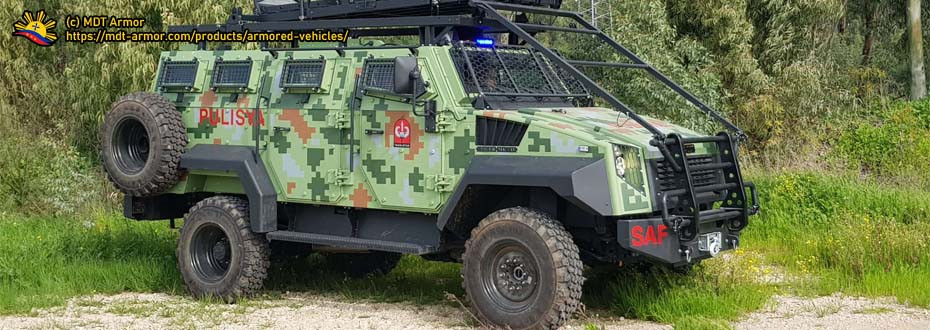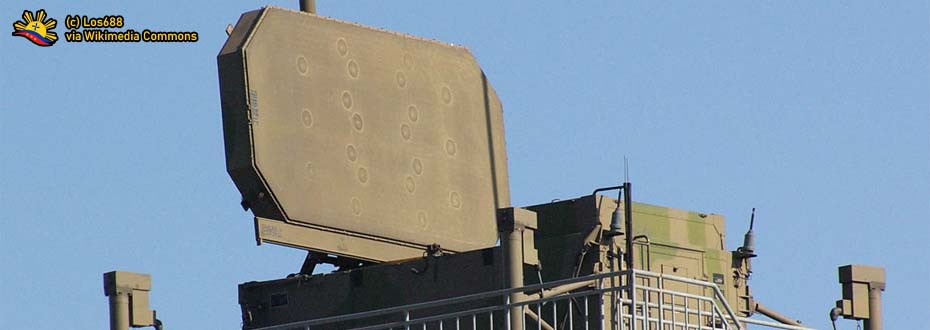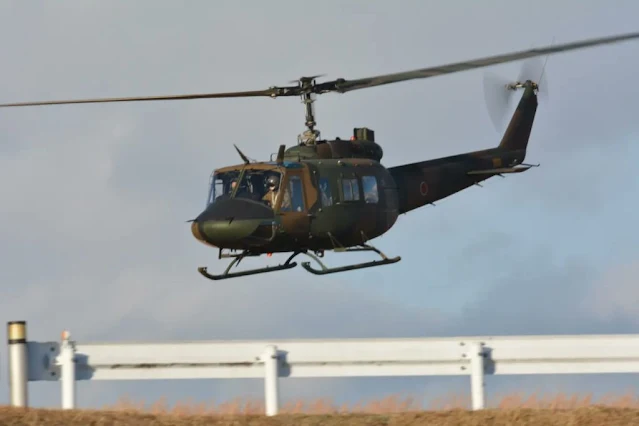The discussion of having a decent ground-based air defense system or GBADS like Israel's Rafael SPYDER GBADS has made here in Pitz Defense Analysis, although the in-depth understanding of the technicalities of the system and its variants has not yet discussed in-detail.
This article will cover those details, giving a deeper perspective and information regarding the Philippine Air Force's most capable and modern air defense system it currently has in possession.
OVERVIEW - FROM THE HEADLINES
 |
The Philippine Air Force's SPYDER Ground-Based Air System from RAFAEL Systems Ltd., installed onboard Czech-made Tatra truck platforms.
Image Source @AlfredoGenom |
Last November 2022, the Philippine Air Force inducted the first delivery of a single-battery SPYDER Ground-Based Air Defense System from Rafael Systems Ltd in Israel, of which this also includes a single C-295 medium-lift aircraft from Spain's Airbus subsidiary EADS-CASA, marking the country's introduction into bolstering its air defense systems ecosystem as planned on securing its Philippine Air Defense Identification Zone or PADIZ.
For the Philippine Air Force, purchasing these Ground-Based Air Defense Systems is a sign of the air branch's desire not only to defend the country's critical defense installations, facilities, and other essential military hardware, but also an integral part of defending the country's "national center of gravity", of which they mean critical government infrastructure, as well as other essential strategic areas of key facilities such as key business districts, airports, electric power plants, water reservoirs, and others.
The Ground-Based Air Defense System Acquisition Project, under the Horizon 2 of the Revised AFP Modernization Program or the Republic Act 10349, is one of the few key big-ticket projects pushed throughout 2018 and 2022, of which the Allotted Budget for the Contract for this project or the ABC amounts to PHP6,846,750,000, with the package including an integrated logistics support, a simulator for personnel to immerse on how to operate the system, a missile repair facility, and air defense systems missile training for personnel that are about to use these systems.
In this article, we are to discuss further in-detail about the variant of the SPYDER Ground-Based Air Defense System that the Philippine Air Force received; the different variants of the SPYDER Ground-Based Air Defense System that Rafael advertises to the general defense market; and the logistical truck chassis used for the air defense equipment fittings; all of which were not discussed in the previous article we've made for the SPYDER GBADS, itself tackling the Rafael Advanced Defense Systems Ltd., and the dynamics of the Philippine Air Defense Identification Zone or PADIZ.
THE VARIANT PAF RECEIVED (SPYDER-MR GBADS)
 |
Image: A SPYDER-MR GBADS, fitted onboard a Mercedes ACTROS 4141 Truck chassis.
Image Source. |
The variant of the SPYDER Ground Air Defense System that the Philippine Air Force recently entered active duty is the SPYDER-MR or the Medium Range variant, among all variants that RAFAEL Systems Ltd., advertises to the broad and general defense market, just like the one seen on the image above when they showcased it on the 2018 Black Sea Defense and Aerospace Exhibition or BSDA 2018 that took place in Bucharest, Romania.
The range of a SPYDER-MR system, based on illustrations made by Rafael Systems on their presentation (screen grabbed) is at 2 kilometers to 60 kilometers maximum, although a different metric has presented on another reputable website, in which the MR variant apparently has the maximum range of 50 kilometers, with an altitude of fire off around 16 kilometers, or in a borderline between the Earth's atmospheric layers of troposphere and stratosphere.
While both Python and Derby air-to-air missiles are common munitions that are available on all variants of the SPYDER Air Defense System made by Rafael Systems Ltd., what makes SPYDER MR variant more potent regarding its range is the use of truck-mounted high performance surveillance radar, a support sensor system that expands the detection range of each battery, covering larger areas of responsibility especially the portions of the Philippine Air Defense Identification Zone.
Talking about a single variant of the SPYDER Ground-Based Air Defense System is one thing, while discussing the variants other than the Philippine Air Force's SPYDER-MR or Medium Range system is entirely different, whereby we can get the comparisons between many of the SPYDER Air Defense System variants, giving further details as to the capabilities of the one that the air service branch got to-date.
THE DIFFERENT SPYDER GBADS VARIANTS
Coming from Rafael Systems Ltd., the SPYDER Ground-Based Air Defense Systems came with at least four variants, each with its own configuration, like with the different launching units seen in an image above. These are the SPYDER-SR (Short Range), SPYDER-ER (Expanded Range), SPYDER-MR (Medium Range) like what the Philippine Air Force recently received, and the SPYDER-LR (Long Range).
Regarding each variant's specifications, aside from the MR or the Medium Range variant that the Philippine Air Force currently gets in its inventory, the SPYDER-SR or Short Range variant comes with a maximum range of 20+ kilometers, with an altitude of fire comes at around 9 kilometers, covering a short air cover for a small military facility or other critical government infrastructure.
As for the Expanded Range or SPYDER-ER variant, it comes with an increased range at the maximum of 38-39 kilometers, while having an altitude of fire of around 12 kilometers, at least 4 kilometers higher than the SR variant that came before it, sufficiently covering a small to a medium-sized city with a significant number of population against aerial threats, along with strategic areas in the covered zone.
While we already discussed the features of the SPYDER-MR or Medium Range variant, as this is the one that the Philippine Air Force currently has in its wide array of military hardware gained to-date, let us proceed right away to the most capable variant among the SPYDER family of air defense system, which is the Long Range or the SPYDER-LR variant, whereby it came with the maximum range of around 75-77 kilometers and an altitude of fire of 19 kilometers, well beyond the atmospheric troposphere layer and just well within the stratosphere.
Aside from the differing range and altitude coverage capability between the four variants of the SPYDER Ground-Based Air Defense System, Rafael Advanced Defense Systems Ltd., also pointed out the differing missile configuration that each of the variants used as munitions, although all variants used the same Python 5 and I-Derby missile munitions in their systems.
For the SPYDER-SR and SPYDER-ER variants, it uses the normal configuration of the Python 5 that came with a dual-band Imaging Infra-Red (IIR) and CCD Seeker; the 'I-Derby missile' fitted with an active radar seeker, and the 'I-Derby ER missile' or the Expanded Range variant of the known Beyond Visual Range missile, fitted with a 2-pulse rocket motor that for this longer range version of this missile.
Just like the first two variants, the SPYDER-MR and SPYDER-LR variants comes with a similar missile munition being the Python 5 and the 'I-Derby Missiles', although these air-to-air missiles now come with an additional booster assembly that significantly increases its overall range, making it possible for the latter two variants to achieve the widest air defense coverage as marketed by Rafael Advanced Defense Systems Ltd.
Finalizing this up, all SPYDER variants came with a truck-mounted Command and Control Unit, with a radar sensor unit mounted onboard for the SPYDER-SR and SPYDER-MR versions, whereas the SPYDER-MR and SPYDER-LR versions came with its own dedicated truck-mounted radar unit, as well as it also came with support vehicles as part of the package and each unit in a battery can is transportable by a cargo aircraft like the Philippine Air Force's C-130.
TRUCK CHASSIS - CZECH TATRA T815-7 8X8 VEHICLE
 |
Czechia's Tatra T815-7 High Mobility Utility Truck.
(c) Adam Hauner, Wikimedia Commons. |
Rafael Advanced Defense Systems Ltd., has the discretion in getting which truck chassis they will install their SPYDER Ground-Based Air Defense Systems, which varies to the different versions that the end-user militaries are seeking and also the provided budget to the contract in which it becomes a primary metric for the country's air defense requirements, whereby, in the Philippine Air Force's case, came as the Czech-made Tatra T815-7 utility truck.
Specifically, the one that the Philippine Air Force has got is the Tatra T815-7MOR89 8x8 high mobility heavy duty tactical truck, itself being a different variant that the one seen in the image above; itself being a 6x6 axle configuration that are lenient on carrying troops and light military equipment rather than entire sophisticated hardware installed onboard, which is something that the Tatra T815-7MOR89 8X8 axle tactical truck can do in carrying SPYDER Ground Based Air Defense components onboard.
As per product catalogue seen on Tatra's website itself, the T815-7 heavy logistics vehicle is commonly in production for customers outside Europe, albeit that its design came with NATO aircraft transportability in mind which makes sense given that the Philippine military comes with such aircraft like the C-130 Hercules, especially that the Philippine Air Force has the interest through the years in adding the more-capable C-130J-30 Super Hercules into its fleet of cargo aircraft.
The T815-7 trucks came with differing engine configuration, either it may be a Deutz engine, a Caterpillar liquid-cool engine, or a Cummins diesel engine, while having its own axle configuration coming into four variants - the 6x6, 8x8, 10x10, and 12x12 axles, with the latter two have steerable wheels on the two final axles as a design feature for easier steering in intersections.
The truck not only has military applications but also can go applicable to civilian ones as well, with several fire departments around the world use a Tatra T815-7 chassis on their firetrucks, designed to carry heavy equipment that put huge fires out, as well as it used as a heavy equipment itself, with one configured into a crane that can get deployed into areas such as a construction site.
TO SURMISE THIS UP
 |
A single battery of SPYDER-MR GBADS showcased on a display during the induction ceremony.
(c) Philippine Army, via Overt Defense. |
The induction of the first batch of delivered SPYDER-MR Ground-Based Air Defense System for the Philippine Air Force makes it one of multiple countries that officially get this system from an Israeli defense firm Rafael Advanced Defense Systems Ltd., with other countries in Southeast Asia being Vietnam with its SPYDER-SR and SPYDER-MR variants, and Singapore using the SPYDER-SR system.
Aside from getting alongside the aforementioned countries in Southeast Asia that already possessed the system, the Philippine Air Force, for the first time, finally get its first decent and fully sophisticated Ground-Based Air Defense System that is one of primary essential platform that define the country's initiative in putting more security for the entire Philippine Air Defense Identification Zone or PADIZ.
Rafael's SPYDER Ground-Based Air Defense System has shown recent interest, this time coming from European countries, whereby these nations in Europe, specifically Belgium, Bulgaria, Hungary, Poland, and Romania, are in active negotiation with Rafael Systems, although fruitful results from these deals are yet to be seen, although the interest is there all thanks to the ongoing conflict between Russia and Ukraine, with these countries now making sure that their airspace are further secured from any aerial threats.
Just like the ongoing conflict going on in Eastern Europe, we may hope that the Philippine Air Force may consider adding more batteries of the Ground-Based Air Defense System in its arsenal of military hardware, especially given the country's proximity to both China and Taiwan, of which this is a potential powder keg of war in the upcoming years as the former seeks to reunite the latter by all means necessary, even an upright invasion, to bring the latter to the former's helm under the mainland's communist red banner.
At the end, it's not about waging for conflict or amassing military hardware to wage a war, but to get and operate a capable system of interconnected defense components and units, of which include multiple batteries of a capable air defense system that covers the country's entire airspace, augmenting along capable units of the air force like its Multirole Fighters and multiple array of radar stations that monitor the situation 24/7, making sure that the country is fully securing itself from the threats originating from the sky.























%20-%20PDA.jpg)





